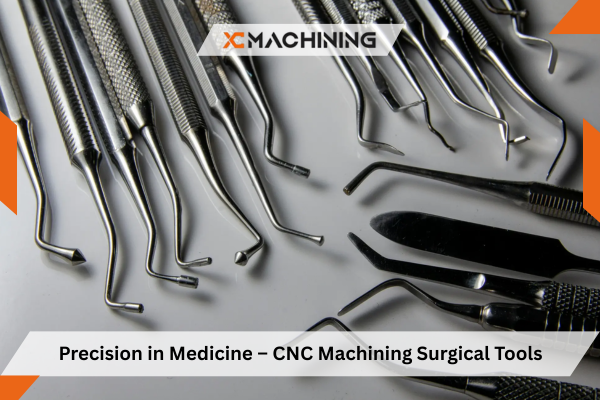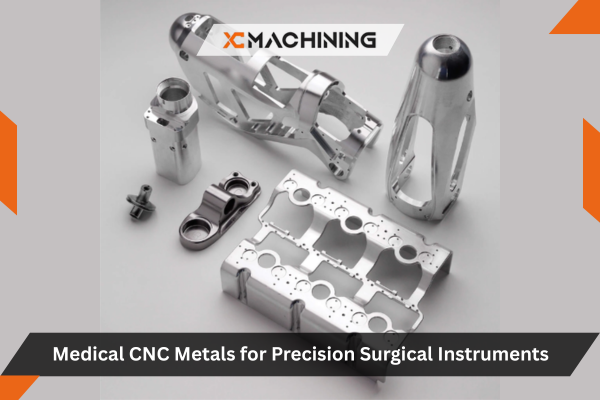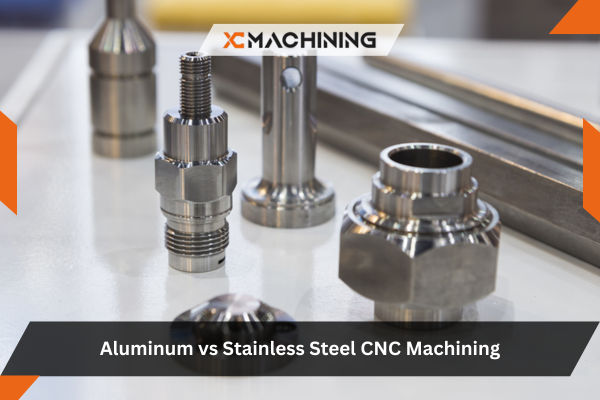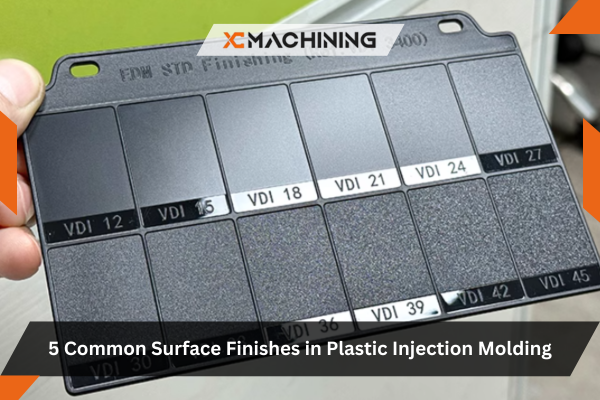Every surgical procedure, from routine appendectomies to complex neurosurgical interventions, depends on instruments that must perform flawlessly. When a surgeon makes an incision, clamps a blood vessel, or repairs delicate tissue, the tools in their hands become extensions of their skill and judgment. The dimensional accuracy, surface finish, material integrity, and functional reliability of these instruments directly influence surgical outcomes and patient safety. CNC machining has emerged as the manufacturing technology that transforms raw materials into the precision surgical tools that modern medicine requires. Understanding how CNC machining services produce these critical instruments the materials employed, tolerances achieved, quality systems maintained, and specialized techniques applied provides insight into how manufacturing excellence supports surgical excellence.
Table of Contents
The Demanding Requirements of Surgical Instruments
Before exploring manufacturing processes, it’s essential to understand what makes surgical instruments uniquely challenging to produce. These specialized tools must satisfy requirements that exceed most industrial applications in their combination of precision, durability, and biocompatibility.
Dimensional accuracy matters critically because surgical instruments often work in confined anatomical spaces where millimeter-level precision determines success or failure. Laparoscopic instruments navigating through small incisions, microsurgical tools manipulating delicate nerves or blood vessels, and orthopedic instruments aligning bone fragments all demand exceptional dimensional consistency. Custom CNC machining services routinely maintain tolerances of ±0.001″ (±0.025mm) or tighter on critical features, ensuring instruments function exactly as surgeons expect.
Surface finish quality affects multiple aspects of instrument performance. Smooth surfaces minimize tissue trauma during procedures, reduce bacterial adhesion that could cause infections, and facilitate thorough cleaning and sterilization. The junction where scissor blades meet, the grasping surfaces of forceps, and the cutting edges of rongeurs all require precisely controlled surface characteristics that only precision CNC machining services can consistently deliver.
Material biocompatibility ensures instruments don’t provoke adverse reactions when contacting blood, tissue, or other bodily fluids. Stainless steel CNC machining services dominate surgical instrument manufacturing because stainless steel alloys—particularly 316L and 420 grades—offer the ideal combination of corrosion resistance, strength, and biological inertness necessary for surgical applications.
Sterilization resistance requires materials and designs that withstand repeated exposure to autoclave steam (121-134°C), ethylene oxide gas, or other sterilization methods without degradation, corrosion, or dimensional changes. CNC machining produces instruments from materials proven through decades of clinical use to maintain integrity through thousands of sterilization cycles.
Mechanical reliability demands that instruments perform consistently through hundreds or thousands of uses. Scissors must cut cleanly after 10,000 cutting cycles. Forceps must maintain precise alignment despite repeated opening and closing. Retractors must provide steady tension without bending or breaking. Precision CNC machining services create the dimensional accuracy and material integrity underlying this long-term reliability.
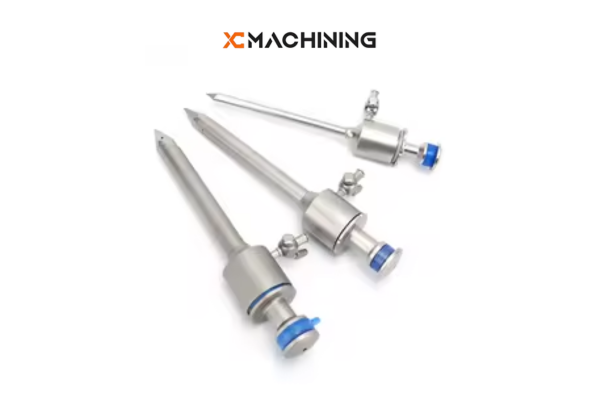
Surgical Instrument Categories and CNC Manufacturing
The diversity of surgical specialties creates extraordinary variety in instrument designs, each presenting unique manufacturing challenges that CNC machining addresses.
Cutting and Dissecting Instruments
Surgical scissors, scalpel handles, and cutting forceps require extremely sharp edges combined with precise alignment ensuring clean cuts without tearing tissue.
Surgical scissors come in numerous configurations—Mayo scissors for heavy tissue, Metzenbaum scissors for delicate dissection, iris scissors for fine work, and specialized designs for specific procedures. Manufacturing these instruments through stainless steel CNC machining services involves:
- Precise blade profiles creating optimal cutting geometry
- Exacting alignment between blade surfaces (typically within 0.0005″)
- Carefully controlled edge angles and surface finish
- Box lock joints machined to tight tolerances for smooth operation
- Ring handles sized for ergonomic comfort with exact inside diameters
Scalpel handles accepting disposable blades require precisely machined blade attachment mechanisms. The slight variation in these features affects blade stability during use, directly impacting surgical precision and safety. Custom CNC machining services produce handles in various sizes (#3, #4, #7) with the exact dimensions necessary for reliable blade retention.
Grasping and Holding Instruments
Forceps, clamps, and needle holders capture and manipulate tissue or surgical materials, requiring precise jaw alignment and controlled closing forces.
Tissue forceps feature serrated or toothed jaws that grip without slipping yet minimize tissue damage. CNC precision machining services create jaw patterns—whether delicate 1×2 teeth for fine tissue or aggressive serrations for secure holding—with dimensional consistency ensuring both jaws meet perfectly across their entire length.
Hemostatic clamps compress blood vessels to control bleeding. The ratchet mechanisms providing staged clamping force must engage smoothly and release reliably. These complex mechanisms incorporate multiple moving parts with clearances measured in thousandths of an inch, all coordinated through precision CNC machining services.
Needle holders grip suture needles securely during tissue closure. The jaw inserts—often tungsten carbide for extended wear—must align precisely within stainless steel bodies. This multi-material construction demands the accuracy that CNC machining delivers, ensuring insert pockets match insert dimensions within 0.0002-0.0005″.
Retractors and Dilators
Retractors hold tissue aside, providing surgical site visibility. Dilators gradually enlarge natural or surgical openings. Both instrument types require smooth surfaces preventing tissue damage and sufficient strength withstanding sustained forces.
Hand-held retractors range from simple Senn retractors for skin to Army-Navy retractors for deeper structures. Manufacturing involves creating handles, blades, and curved forms to exact specifications. Precision cnc machining services produce these instruments in various sizes while maintaining the ergonomics surgeons rely upon.
Self-retaining retractors include complex mechanisms with multiple blades, adjustable arms, and locking systems. Balfour, Bookwalter, and Weitlaner retractors incorporate numerous components requiring precise manufacturing and careful assembly. Custom CNC machining services handle both the individual component production and the exacting tolerances necessary for proper assembly and function.
Probes, Dilators, and Sounds
These instruments explore, enlarge, or calibrate body passages and cavities. Smooth surfaces, precise diameters, and appropriate flexibility characterize this category.
Uterine sounds used in gynecological procedures require specific diameter profiles tapering along their length. Urethral dilators follow similar principles in different size ranges. Lacrimal probes for tear duct procedures demand exceptional surface smoothness and small diameters. All benefit from CNC machining’s ability to hold diameter tolerances within ±0.0005″ while achieving surface finishes preventing tissue trauma.
Specialized Surgical Instruments
Modern surgical specialties employ highly specialized instruments reflecting advances in surgical techniques and technology.
Laparoscopic instruments for minimally invasive surgery feature long, narrow profiles (typically 5mm or 10mm diameter) with articulating end effectors. The combination of length, small diameter, and internal mechanisms presents significant manufacturing challenges. Precision CNC machining services produce the shafts, jaw mechanisms, and actuating components that characterize these sophisticated instruments.
Microsurgical instruments used in ophthalmology, neurosurgery, and reconstructive procedures demand extraordinary precision in miniature scales. Instrument tips measuring fractions of a millimeter require CNC plastic machining services or stainless steel CNC machining services capable of maintaining micron-level accuracy on delicate features.
Orthopedic instruments including drills, saws, reamers, and rasps endure high mechanical stresses while shaping bone. These robust instruments combine strength with precision—drill guides must position holes accurately, saw blades must cut cleanly without binding, and reamers must create perfectly sized bone cavities for implant placement. The demanding mechanical environment requires both material selection and manufacturing precision that CNC machining services provide.
Materials in Surgical Instrument Manufacturing
Material selection fundamentally influences instrument performance, durability, and safety. Several materials dominate surgical instrument production, each offering distinct advantages.
Stainless Steel Alloys
Stainless steel represents the traditional and still dominant material for surgical instruments. Stainless steel CNC machining services work primarily with specific alloys optimized for medical applications.
316L Stainless Steel: This low-carbon austenitic stainless steel offers excellent corrosion resistance, good biocompatibility, and reasonable strength. The “L” designation (maximum 0.03% carbon) improves resistance to sensitization during welding and sterilization. Many reusable surgical instruments utilize 316L for its balance of properties and moderate cost.
420 Stainless Steel: This martensitic stainless steel achieves higher hardness through heat treatment, enabling sharp cutting edges that maintain sharpness through extended use. Surgical scissors, scalpels, and other cutting instruments often employ 420 stainless for its edge-holding capability. The material’s magnetic properties also facilitate retrieval if instruments are accidentally dropped during surgery.
17-4 PH Stainless Steel: Precipitation-hardening stainless steel provides exceptional strength (up to 1,400 MPa tensile strength) with good corrosion resistance. Instruments subjected to high mechanical stresses—orthopedic tools, needle holders, bone-cutting instruments—benefit from 17-4 PH’s superior mechanical properties.
Titanium Alloys
Titanium’s combination of light weight, excellent corrosion resistance, and non-magnetic properties suits specific surgical applications. Microsurgical instruments benefit from titanium’s reduced weight minimizing surgeon fatigue during lengthy procedures. Non-magnetic properties prove valuable in MRI-compatible instruments. However, titanium’s lower hardness compared to stainless steel limits applications requiring sharp cutting edges or high wear resistance.
Tungsten Carbide
Extremely hard tungsten carbide inserts provide wear-resistant surfaces in needle holder jaws and scissor inserts. CNC machining produces the stainless steel bodies and precisely dimensioned pockets, while separate grinding operations create the carbide inserts. Final assembly requires the precision that custom CNC machining services deliver, ensuring perfect alignment between metal and carbide components.
Medical-Grade Plastics
Modern surgical instruments increasingly incorporate engineering plastics for handles, sheaths, and non-critical components. CNC plastic machining services work with materials including:
PEEK (Polyetheretherketone): Exceptional strength, heat resistance, and biocompatibility make PEEK suitable for instrument handles requiring repeated autoclaving. Radiolucent properties enable use in procedures where metal artifacts would compromise imaging.
Ultem (Polyetherimide): Outstanding heat resistance and transparency suit sterilizable instrument trays, surgical guide components, and transparent housings where internal visibility matters.
Acetal (Delrin): Excellent dimensional stability and low friction benefit instrument mechanisms and adjustment components where tight tolerances and smooth operation matter.
Manufacturing Process: From Raw Material to Surgical Instrument
Transforming bar stock or forgings into precision surgical instruments involves multiple CNC machining operations coordinated through comprehensive manufacturing programs.
Initial Machining Operations
Turning operations create cylindrical forms, handles, and shaft geometries on CNC lathes. Medical CNC turning produces the basic shapes—instrument shanks, handle contours, and cylindrical sections—removing bulk material efficiently while establishing key dimensions.
Milling operations create complex profiles, flat surfaces, and intricate features using CNC milling machines. Three-axis machining handles many instrument geometries, while 5-axis machines produce complex curves and compound angles characterizing modern instrument designs.
Drilling operations create holes for pivot pins, assembly fasteners, and internal passages. Precision drill fixtures and sharp carbide drills maintain positional accuracy within ±0.0005″ and hole size tolerances of ±0.0002″.
Secondary Operations
Grinding operations achieve the surface finishes and edge geometries that cutting instruments require. Surface grinding produces flat, smooth surfaces on scissor blades. Cylindrical grinding creates precise diameters on pins and shafts. Specialty grinding operations create the cutting edges on surgical scissors, rongeurs, and other cutting instruments.
Heat treatment enhances mechanical properties of martensitic stainless steels. Controlled heating and cooling cycles develop the hardness necessary for cutting edges while maintaining sufficient toughness preventing brittle fracture. Heat treatment typically occurs after rough machining but before final finishing operations.
Electropolishing removes microscopic surface irregularities, creating ultra-smooth finishes that resist corrosion and bacterial adhesion. This electrochemical process removes a thin surface layer, slightly reducing dimensions. Precision CNC machining services account for electropolishing material removal when establishing pre-polish dimensions.
Passivation chemically treats stainless steel surfaces, removing free iron and enhancing the protective oxide layer that provides corrosion resistance. This final surface treatment ensures instruments resist corrosion despite repeated sterilization and exposure to body fluids.
Assembly and Adjustment
Multi-component instruments require careful assembly ensuring proper alignment and function. Precision cnc machining services create components with the accuracy necessary for trouble-free assembly, but skilled technicians perform final fitting, adjustment, and functional testing ensuring each instrument meets performance standards.
Quality Control and Inspection
The critical nature of surgical instruments demands comprehensive quality assurance throughout manufacturing.
Dimensional Inspection
Coordinate measuring machines (CMMs) verify complex three-dimensional geometries with micron-level accuracy. First article inspection of new instruments includes complete dimensional verification confirming that manufactured parts match engineering specifications.
Optical comparators project magnified part profiles enabling rapid verification of critical dimensions and feature locations. These systems provide fast, non-contact measurement suitable for production inspection.
Traditional metrology using micrometers, calipers, and gauges verifies key dimensions throughout production. Statistical process control tracks measurements, detecting trends before parts exceed tolerances.
Functional Testing
Instruments must not only meet dimensional specifications but also function properly. Functional testing includes:
Cutting performance: Surgical scissors must cut cleanly through test materials (typically surgical gauze or paper) with specified closing forces.
Jaw alignment: Forceps and clamps require perfect jaw alignment across their entire length, verified through visual inspection and fit testing with precision feeler gauges.
Ratchet function: Clamping instruments must engage and release smoothly through all ratchet positions without slipping or binding.
Surface finish: Visual inspection and tactile assessment confirm surface smoothness meeting specifications. Surface roughness measurements quantify finishes on critical functional surfaces.
Material Verification
Material certification: Mill test reports trace material composition and mechanical properties to original production lots. X-ray fluorescence (XRF) analysis confirms material identity, preventing mix-ups that could compromise instrument performance or biocompatibility.
Hardness testing: Rockwell or Vickers hardness measurements verify that heat treatment achieved specified hardness levels, particularly critical for cutting instruments requiring edge retention.
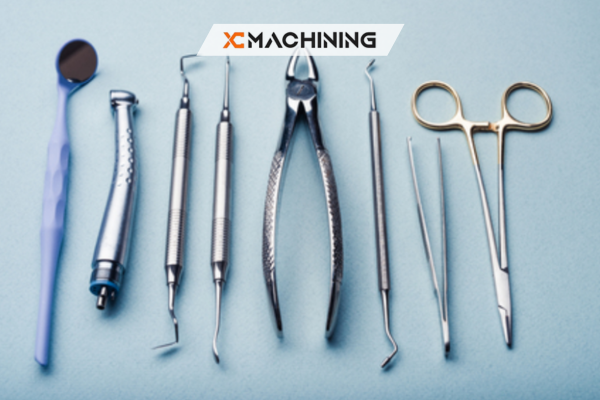
Regulatory Considerations in Surgical Instrument Manufacturing
Surgical instruments must comply with regulatory requirements governing medical device manufacturing. FDA registration, ISO 13485 certification, and comprehensive quality management systems ensure that custom CNC machining services maintain the rigor necessary for medical device production.
Design controls document instrument specifications, intended use, and verification testing. Process validation demonstrates that manufacturing processes consistently produce instruments meeting specifications. Material traceability links finished instruments to material lots, machining operations, and inspection results—enabling complete traceability from raw material through final sterilization.
Biocompatibility testing per ISO 10993 standards verifies that instruments don’t provoke adverse biological responses. Cleaning validation ensures that instruments can be effectively cleaned and sterilized between uses. These requirements extend beyond basic machining capabilities, demanding comprehensive quality systems that reputable precision CNC machining services maintain.
Selecting CNC Machining Services for Surgical Instruments
When outsourcing surgical instrument manufacturing, careful supplier selection ensures quality and regulatory compliance.
Essential Qualifications
ISO 13485 certification: This medical device quality management standard demonstrates systematic approaches to quality assurance, risk management, and regulatory compliance specific to medical manufacturing.
FDA registration: For U.S. market access, manufacturing facilities must register with FDA and comply with 21 CFR Part 820 Quality System Regulations.
Material expertise: Experience with medical-grade stainless steels, titanium alloys, and engineering plastics specific to surgical applications.
Appropriate equipment: Modern CNC machining centers, precision grinding equipment, and advanced metrology systems capable of achieving required tolerances and surface finishes.
Quality documentation: Comprehensive inspection records, material certifications, and process documentation satisfying regulatory requirements.
Technical Capabilities to Evaluate
Achievable tolerances: Standard precision should reach ±0.001″ with capability to achieve ±0.0005″ or tighter on critical features.
Surface finish capabilities: Ability to produce finishes from rough machined (125 Ra) to precision ground (8-16 Ra) or better depending on functional requirements.
Material options: Processing capabilities across stainless steel CNC machining services, titanium machining, and CNC plastic machining services.
Volume flexibility: Capacity to handle both prototype quantities during development and production volumes for commercialized instruments.
Secondary operations: In-house or reliable partnerships for heat treatment, electropolishing, passivation, and assembly.
Conclusion
Precision in medicine depends fundamentally on precision in manufacturing. CNC machining transforms the demanding requirements of surgical instruments—dimensional accuracy, surface finish, material integrity, and functional reliability—into physical reality through controlled material removal processes, comprehensive quality systems, and specialized expertise. From simple retractors to complex laparoscopic instruments, from general surgical scissors to specialty microsurgical tools, CNC machining services provide the manufacturing foundation that surgical excellence requires.
The evolution of surgical techniques continuously challenges manufacturing capabilities. Minimally invasive approaches demand instruments combining complexity with miniaturization. Robotic surgery requires components with extraordinary precision enabling millimeter-level accuracy. Patient-specific instruments tailored to individual anatomy need custom manufacturing with rapid turnaround. Throughout these advances, CNC machining remains the technology enabling surgical innovation—proving that precision in manufacturing directly enables precision in medicine, ultimately benefiting the patients whose lives depend on the instruments that skilled surgeons wield with confidence.
FAQs About CNC Machining Surgical Tools
1. What does CNC machining refer to in making surgical tools?
CNC cutting machines are used to manufacture CNC machining surgical tools by shaping and measuring the materials they cut.
2. Why are surgical parts made of stainless steel?
Stainless steel surgical parts offer corrosion resistance, durability, and biocompatibility, making them ideal for long-term surgical use.
3. Do the tools created by CNC cleaning come to you in sterile conditions?
Yes. Through sterile machining practices, tools are cleaned, passivated, and packaged in controlled environments to ensure sterility.
4. Am I able to order special blades for a particular type of surgery?
Absolutely. Custom blade and cutter machining services are available to meet specialized surgical requirements.
5. How correct are the results produced by CNC machines for surgical tools?
To produce complex and important tools, CNC machines must be able to achieve tolerances of ±0.0005 inches.

